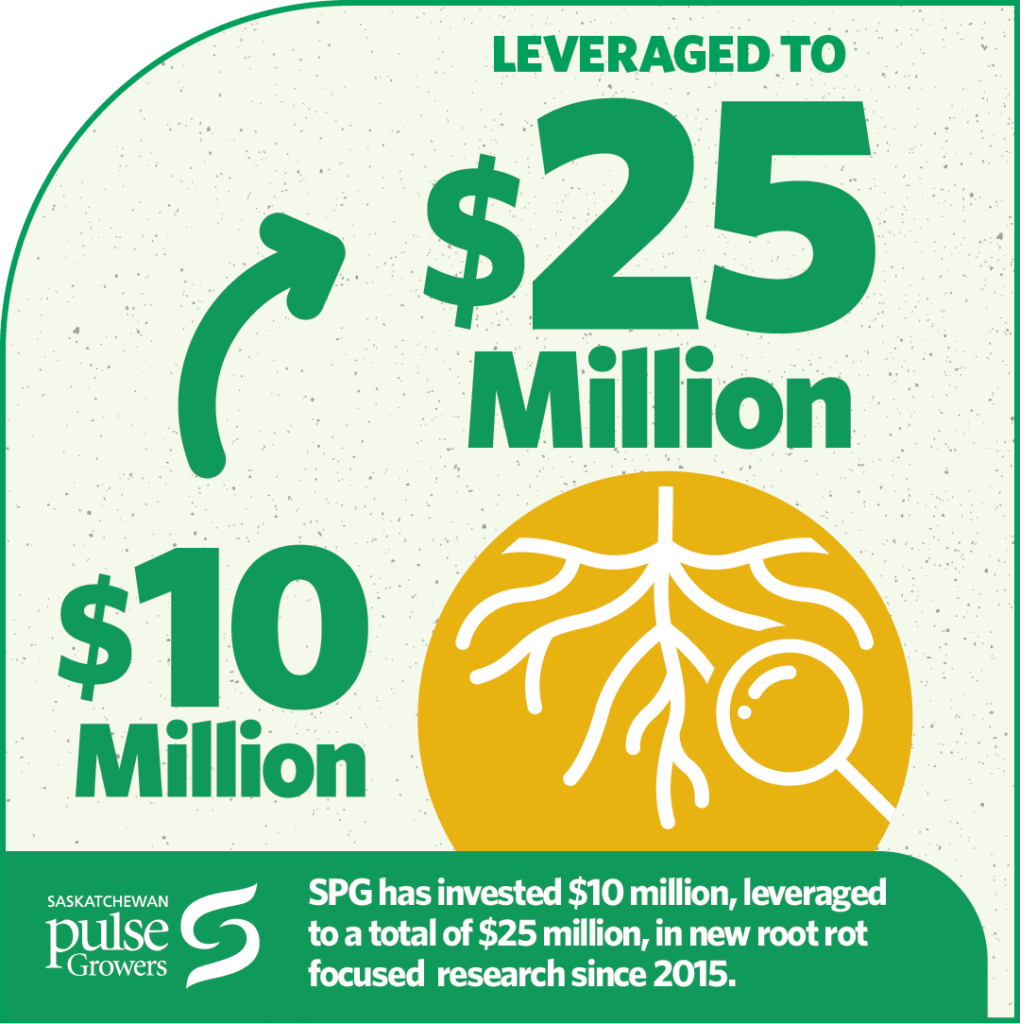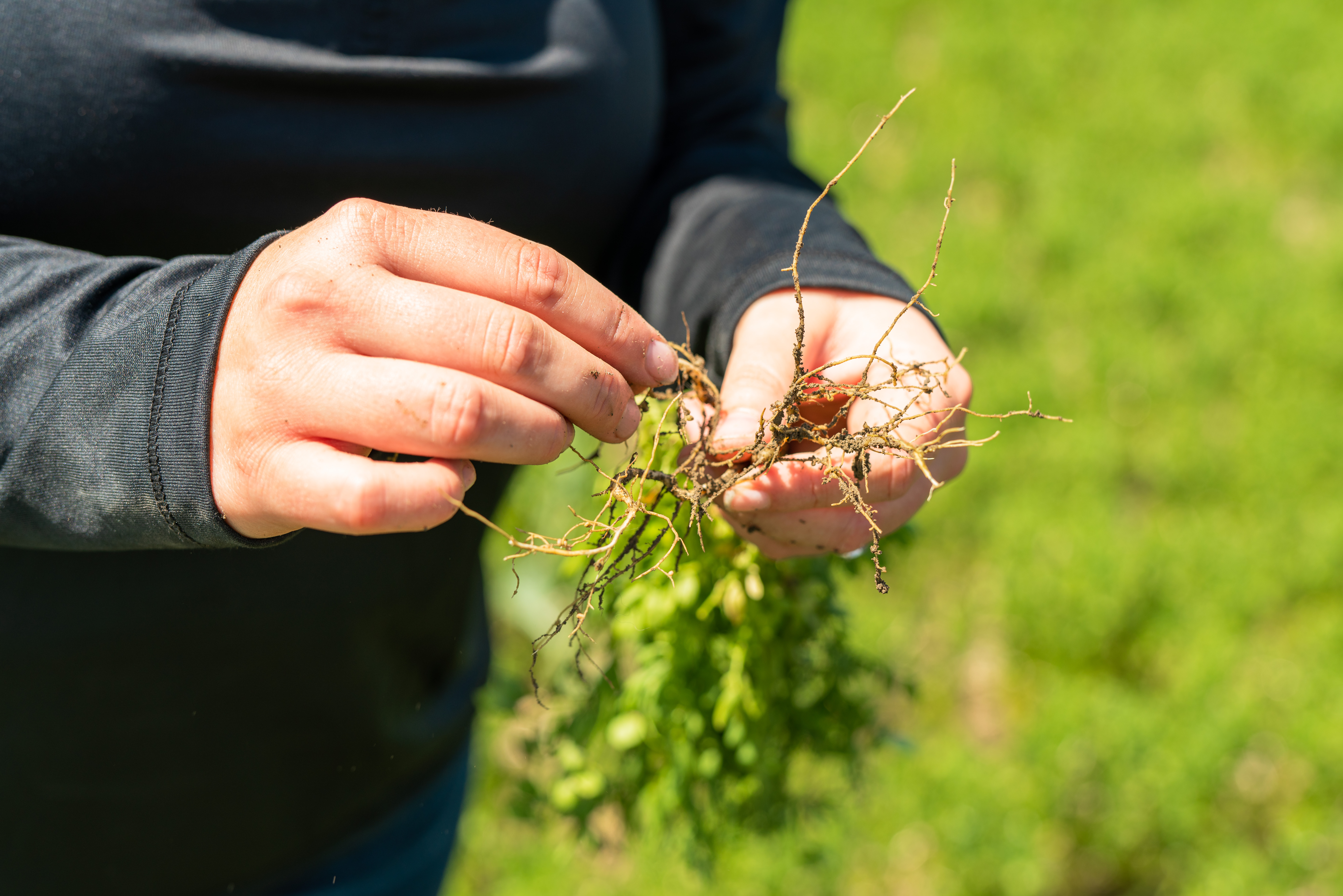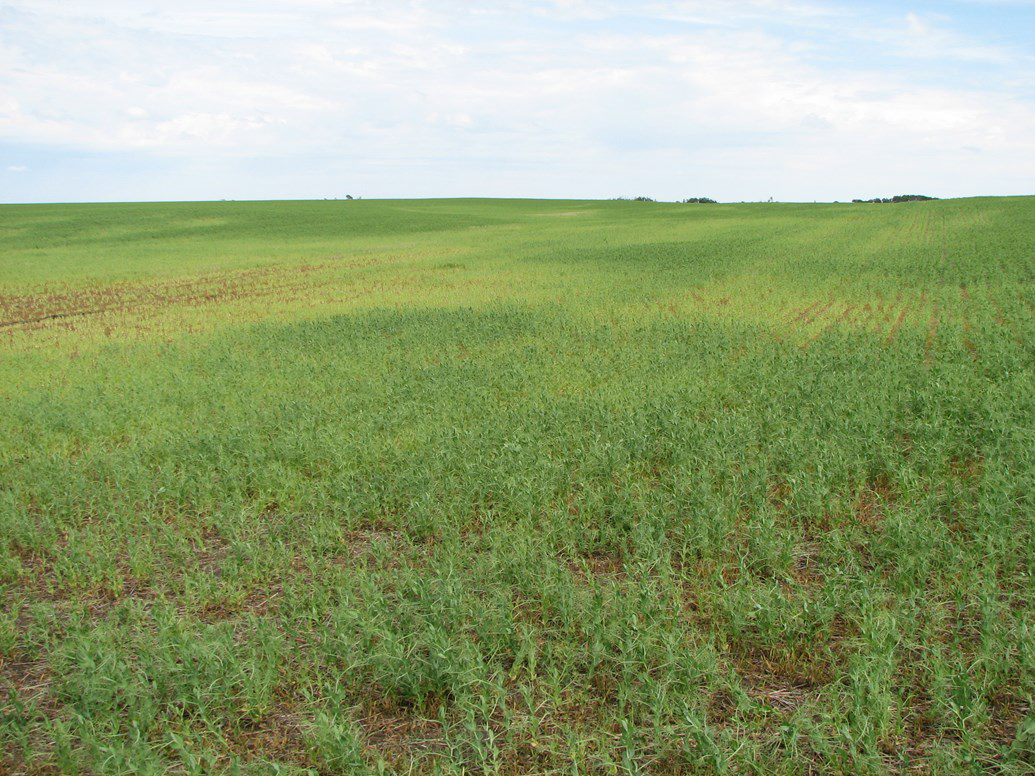In the last decade, root rot complex has become the top production challenge for Saskatchewan pea and lentil growers.
This soil disease complex, which thrives in wet, warm conditions, has expanded across the province, causing up to 60–84% yield declines in peas and lentils and losses in sales and exports of up to $1.5 billion a year.
Currently, there are limited practices or products that can effectively control Aphanomyces which is the most devastating pathogen of the root rot complex in pulses. The only option for managing Aphanomyces is long-term rotations (avoiding peas or lentils for 6 to 8 or more years) which has resulted in growers expanding their rotations or moving away altogether from peas and lentils.
This is why addressing root rot in pulses has become a top priority for Saskatchewan Pulse Growers (SPG).
SPG has been working towards this goal for nearly as long as root rots have been an urgent matter in Saskatchewan, investing $10 million into root rot research in the last ten years (leveraged to a value of $25 million with partner funding).

More recently though, SPG has increased momentum.
In 2024, SPG announced funding for a pulse-specific research program addressing root rot through the Saskatchewan Ministry of Agriculture’s Strategic Research Initiative (SRI) and under the Sustainable Canadian Agriculture Partnership. The total investment of this program is $4.4, which will fund five years of research done in collaboration with partners the University of Saskatchewan, the National Research Council of Canada and Agriculture & Agri-Food Canada.
Also announced was a $4.5 million investment in improving new pulse varieties by addressing diseases such as root rot, as part of our partnership with the Saskatchewan Agriculture Development Fund.
SPG has also launched a variety of additional initiatives in key areas. See more details on these initiatives below.
Partnerships
In 2021, SPG partnered with other pulse commissions to ensure groups are working together to pool resources and define and execute strategic goals in research investment and plans needed to meet them.
The outcome of these efforts was the creation of the National Pulse Research Strategy, a coalition of Alberta Pulse Growers (APG), Manitoba Pulse and Soybean Growers (MPSG), Ontario Bean Growers (OBG), and Pulse Canada.
One of the top priorities was controlling root rots in pea and lentil, as these are the two pulse crops most affected and most likely to incur major losses for growers. The group also set a priority to target the Aphanomyces and Fusarium pathogens, the most damaging and prevalent pathogens of the root rot complex, preventing water and nutrient uptake in the plant.
In 2022, SPG partnered with APG and MPSG to launch the Root Rot Task Force (RRTF). The purpose of this group is to coordinate provincial efforts to maintain profitable and sustainable pea and lentil production and eliminate the risk of Aphanomyces root rot complex in Western Canada.
Breeding Research Investments
One of the top priorities in the fight against root rot is breeding new pea and lentil varieties with resistance to Aphanomyces and other root pathogens.
In the last decade, SPG has funded several research projects with this goal in mind, and work is currently underway to breed new lentil and pea varieties with genetic resistance to root rot pathogens.
Integration of Aphanomyces resistance screening into rapid generation technology of lentil and pea
Marker-assisted selection for Aphanomyces resistance in pea for rapid development of adapted pea varieties with improved Aphanomyces resistance
Developing rapid generation technology involving wild lentil crosses in order to produce Aphanomyces-resistant lentil varieties – proof of concept
Agronomy Research Investments
SPG is also focused on better understanding how the disease manifests, spreads, and evolves as well as how farmers can best control the disease through on-farm practices and grower tools.
This is why SPG is currently funding several research projects to survey the prevalence, severity, and spread of root rot across western Canadian pulse crops and determine which on-farm practices may have the most impact on controlling the disease.
Enhancing the long-term sustainability of pulse cultivation using system approaches
Moving forward to sustainable development of the Saskatchewan pulse industry
Cover cropping as part of a rotation strategy to reduce pea root rot
Resources for Growers
As more information is gathered about how to best manage and control root rot in pulses, it is critical to share that information with growers and other stakeholders including agronomists, researchers, and industry members.
To best do so, the RRTF has designed a multi-media communications campaign designed to share up-to-date, critical information with our stakeholder groups across a variety of platforms and mediums.



